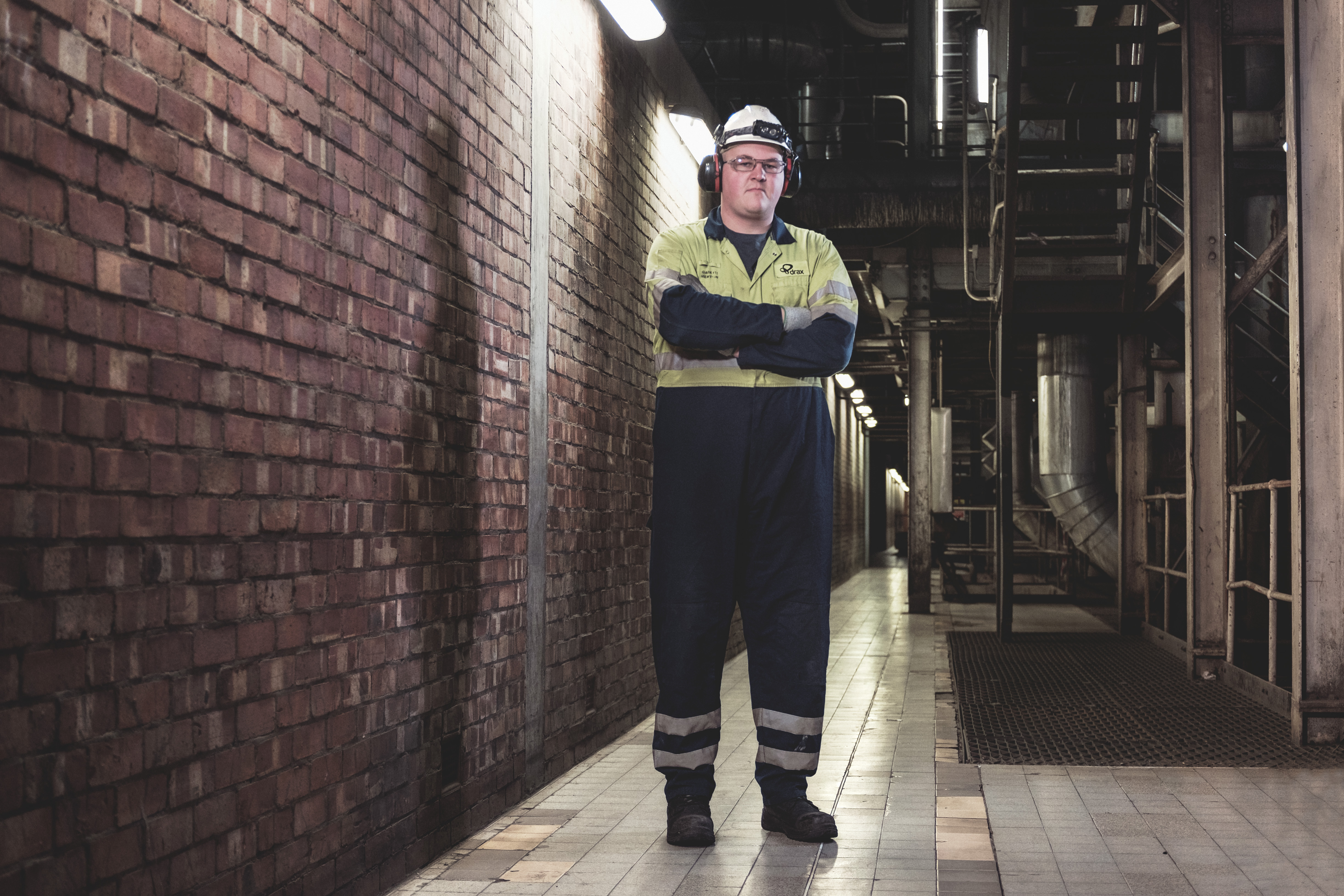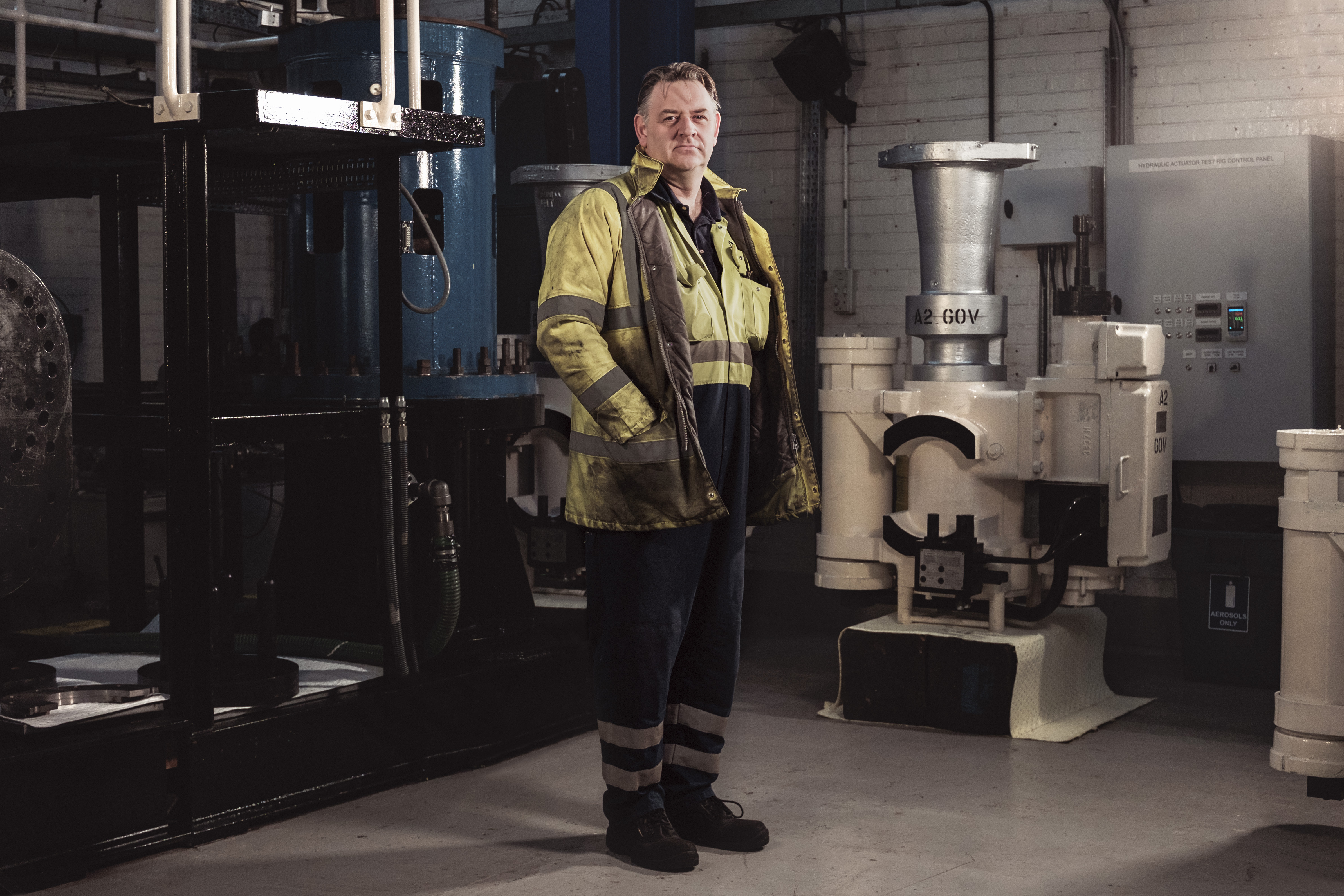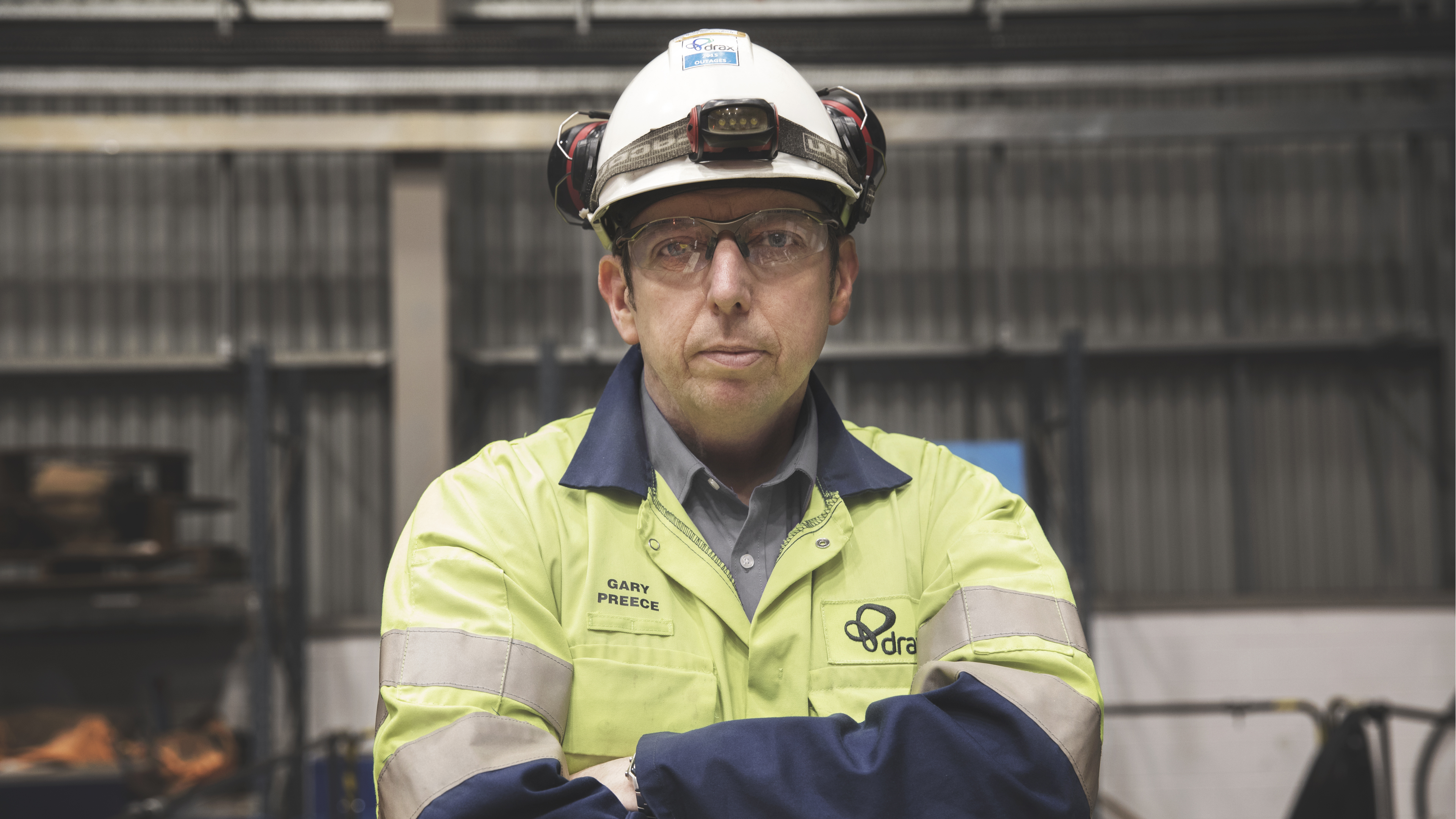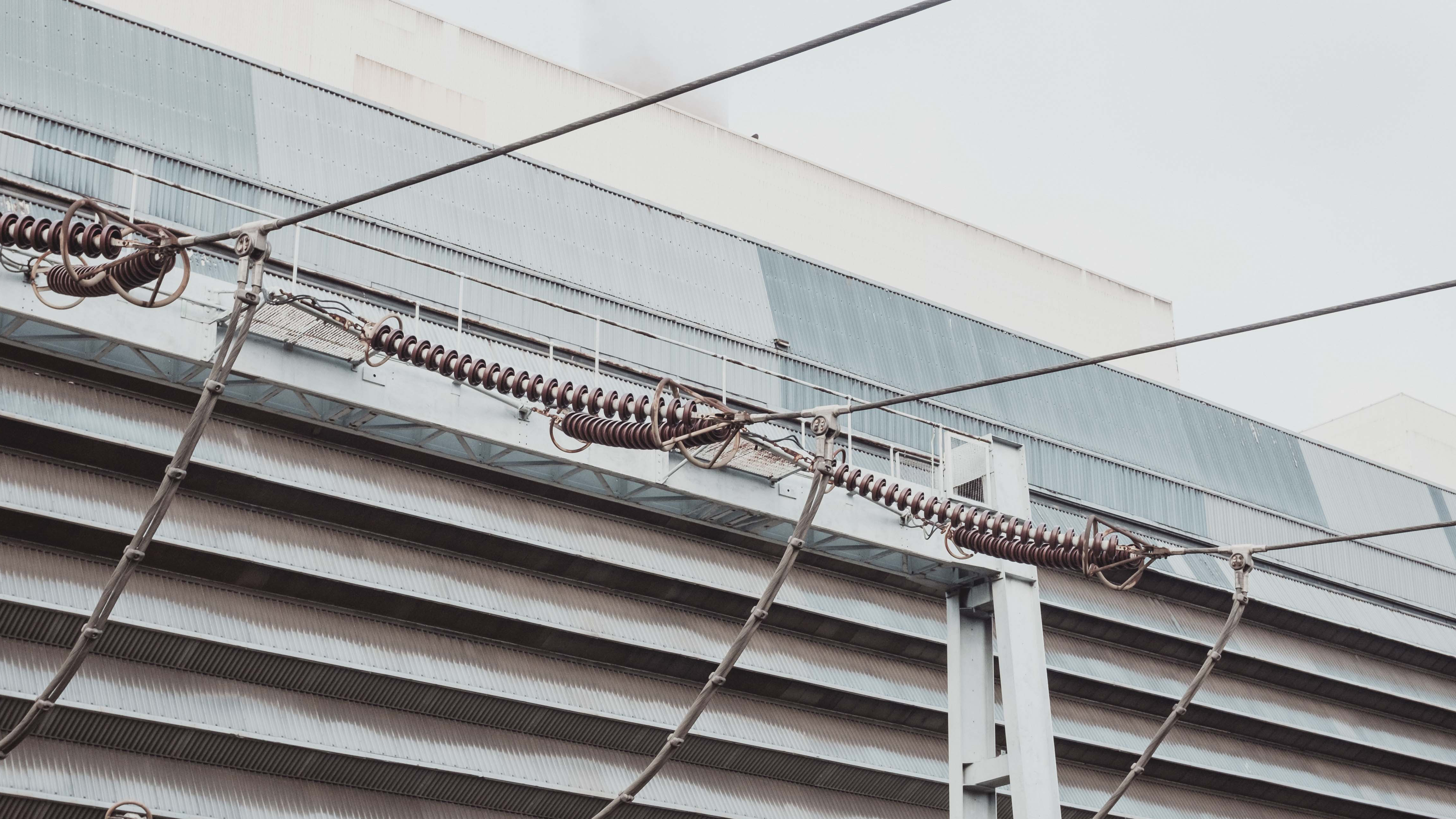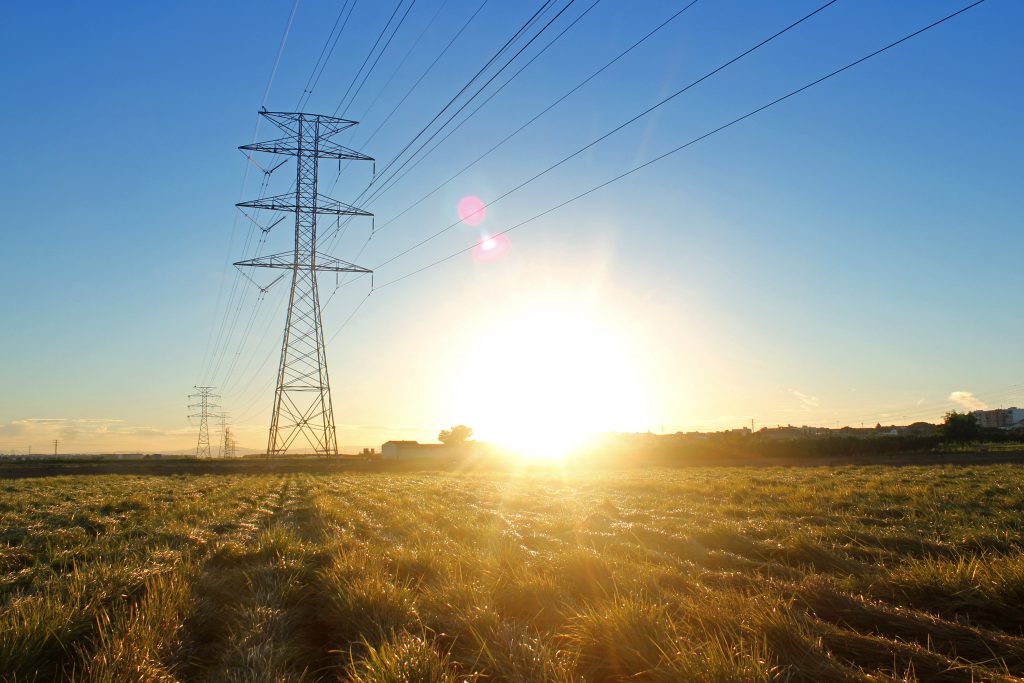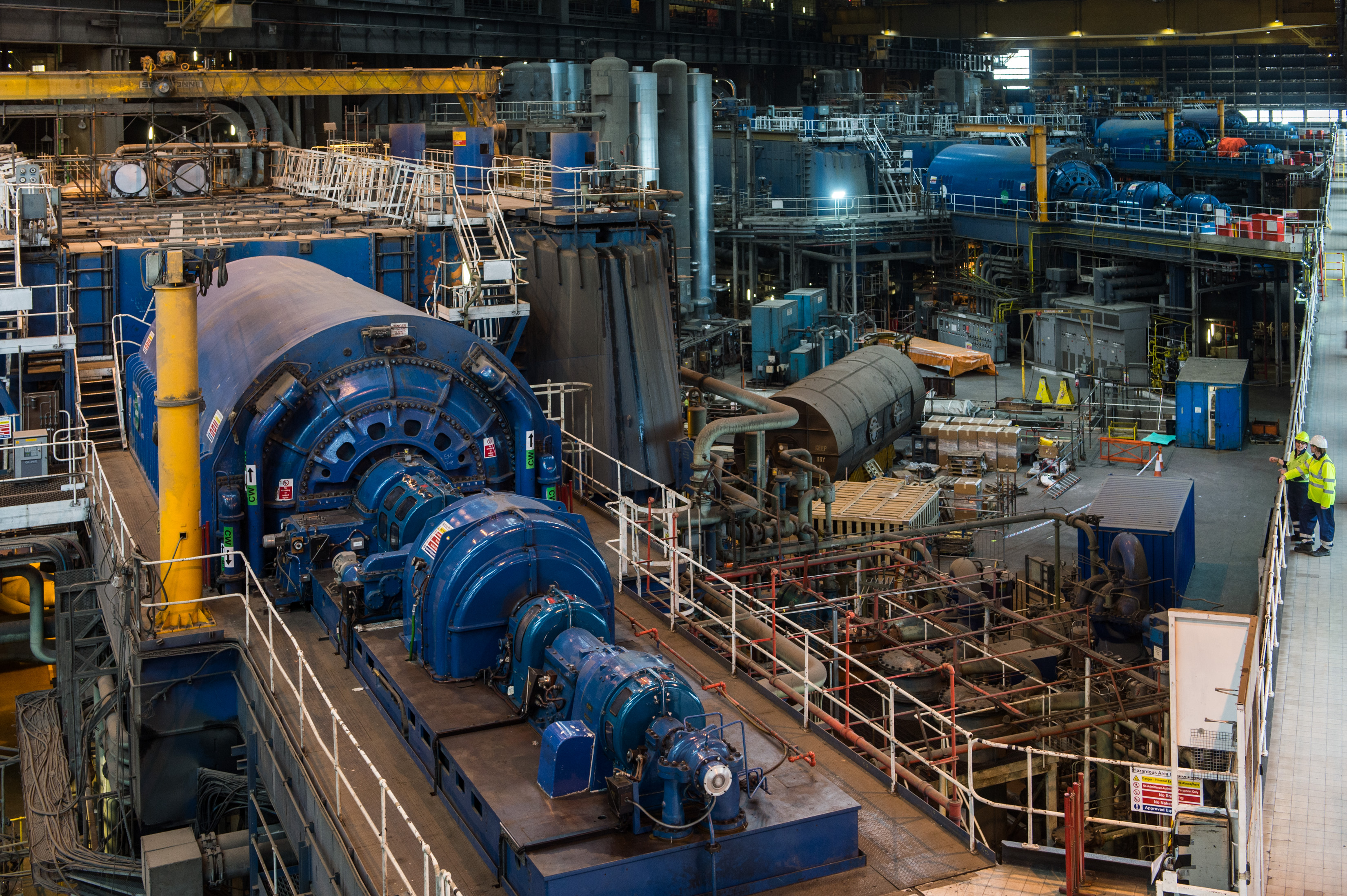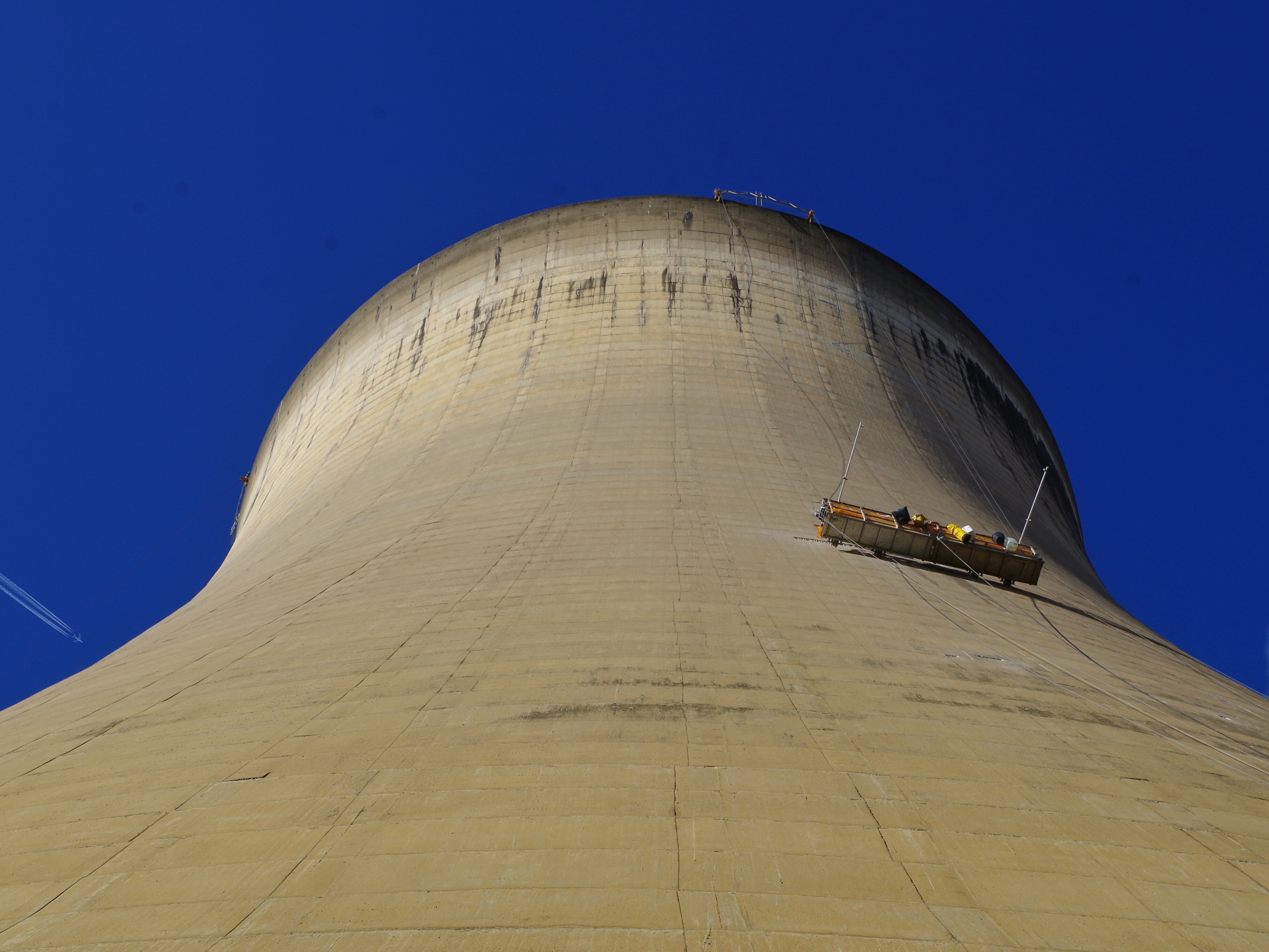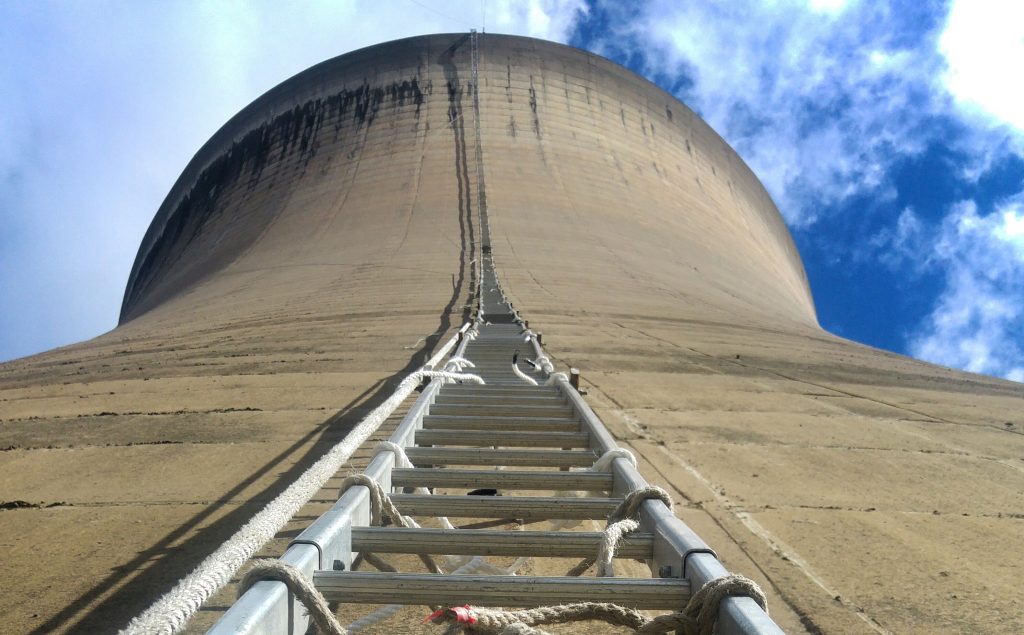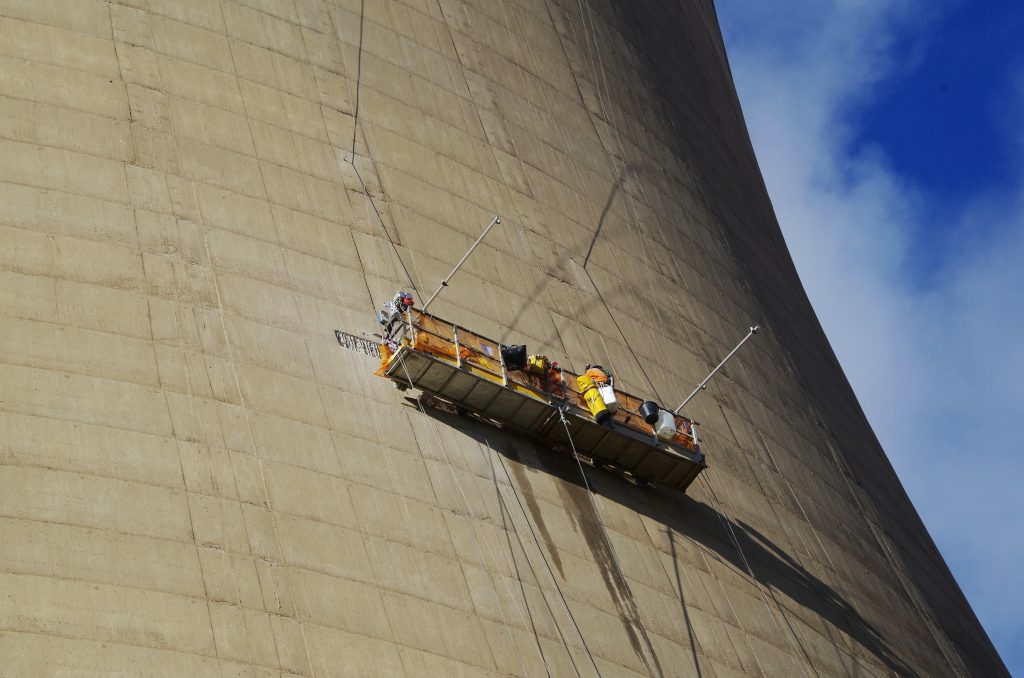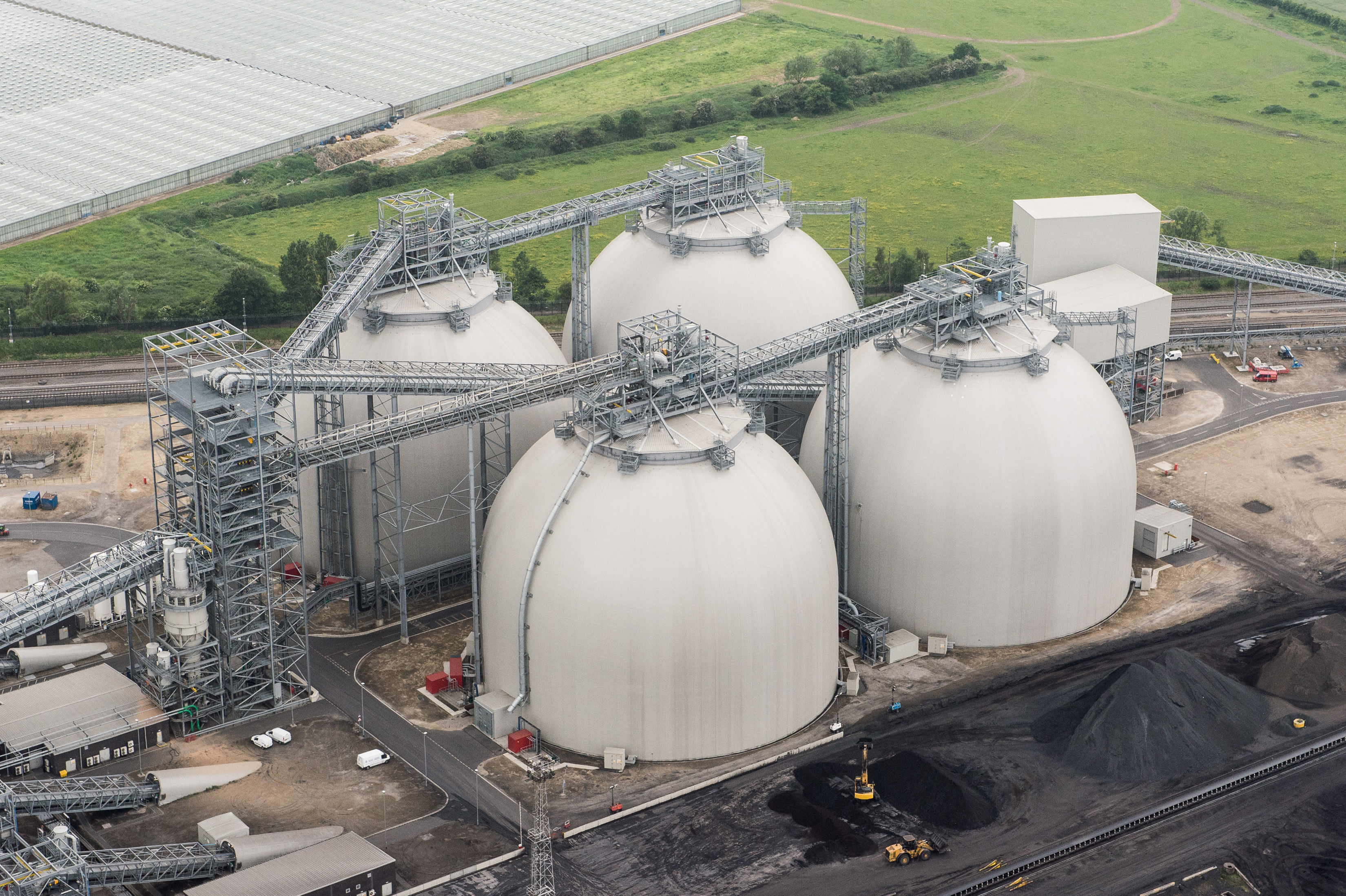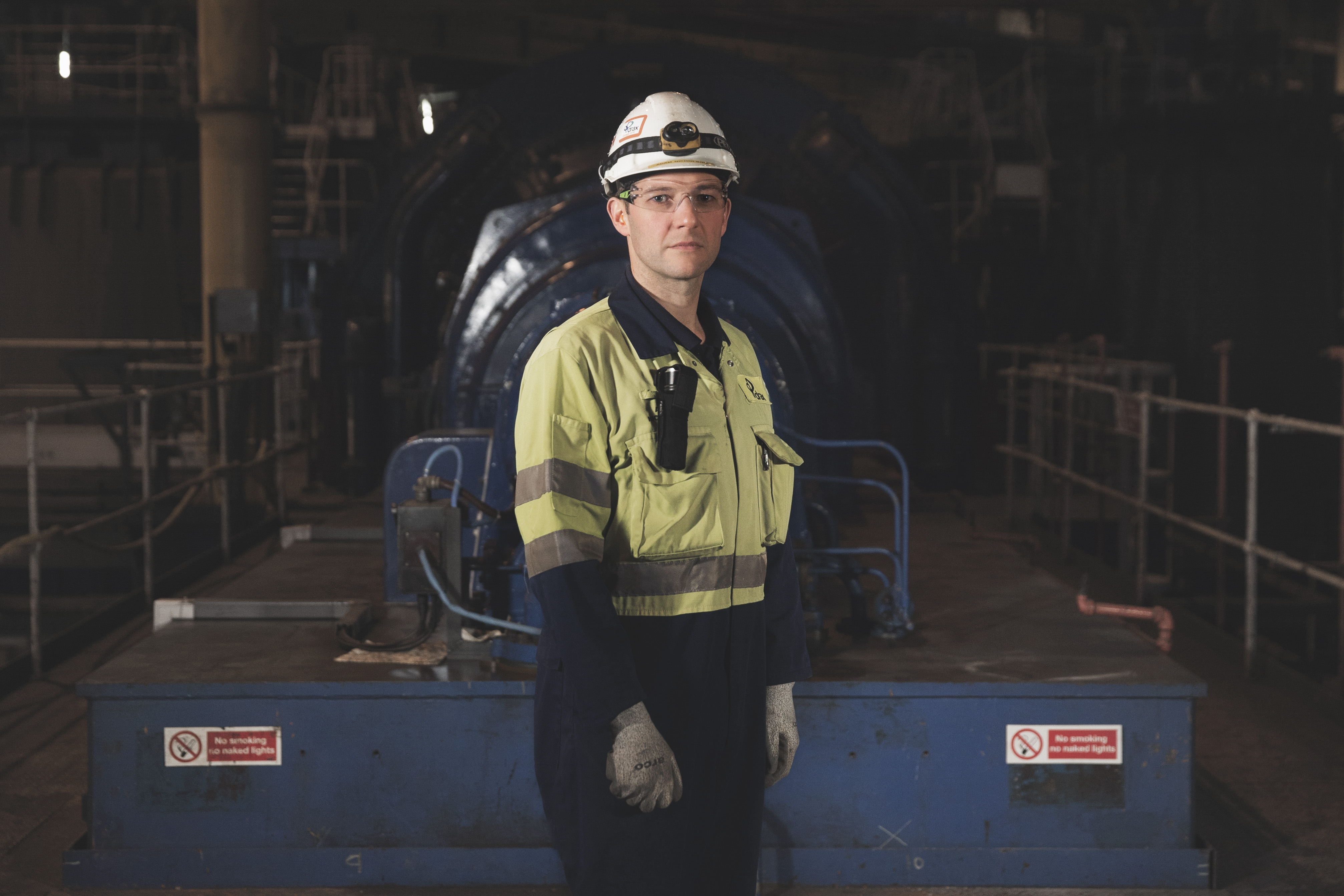
“One of the things I like about my job is working through the challenges we get on a daily basis and finding a solution,” explains Adam Nicholson, Process Performance Section Head at Drax Power Station.
That eagerness to find solutions makes him the ideal candidate for his current job: managing day-to-day improvements at Drax. “I’m responsible for the team which ensures the plant operates at optimum efficiency,” he says. His team make sure the turbines, boiler, emissions, combustion, and mills are not just working, but running as smoothly as possible. It’s a job that brings up constant challenges.
“It’s ultimately what I became an engineer for,” he says, “to follow that problem-solving thirst through.”
Earlier in his career, Nicholson was involved in one of the plant’s biggest problem-solving missions: converting it from running exclusively on coal to also run on compressed wood pellets. It was a unique test – one that required starting from scratch. There wasn’t a bank of existing knowledge that Nicholson and his fellow engineers could call upon.
“We did a lot of testing to learn more about the fuel,” he explains. “We had to understand how to get it to the boiler, how to process it before we put it in, how to convert the mills, and then how exactly the combustion would work.”
Some of that learning involved experimenting with unorthodox solutions to complex problems.
The dog tunnel
“One of the big problems with biomass is you can’t expose it to as high a temperature as you can coal,” Nicholson explains. This presented a challenge when it came to pulverising it.
Before fuel at the power station can be combusted, a set of mills pulverises it into a fine powder using a ring of rotating, heavy-duty balls. This fuel powder is then dried inside the mill with a mix of hot air drawn from the boiler house and cool air. But a fundamental difference between coal and biomass meant this process had to change.
“With coal the air can enter the mills at about 300 degrees. With biomass, if you get much above about 180 degrees, the biomass will set on fire,” says Nicholson. As part of the R&D phase he needed to work out a way to cool the mills down on a temporary basis. “We all took a big gulp and thought, ‘how are we going to do this?’”
Part of the problem was the existing ducts weren’t big enough to deliver enough cool air to the mills to lower their temperature to a safe range. Nicholson improvised a solution. “It was known as the dog tunnel,” he says.
If he could get a temporary, larger air supply to the mills it could provide more cool air and lower the overall temperature, allowing the testing to be conducted. So he found a company that could supply industrial flexible ducting, which he connected to a larger cold air duct and then fed through to a mill to deliver more cool air. As its informal name suggests, the result didn’t look like much, but it worked.
“It didn’t look like a finished solution, but the theory behind it was sound. For occasions like this we had to think, ‘let’s just do it, prove it, and then we can work on a permanent solution.’”
“That’s ultimately what I became an engineer for. To follow that problem-solving thirst through.”
The next challenge
Now the power station is successfully producing more than half of its electricity from biomass, Nicholson’s day-to-day responsibilities lie in ensuring safe operations and driving process efficiencies. To do this he keeps tabs on the combustion process – for example, by using thermal imaging cameras to monitor the inside of the furnace – and tweaks it to get as much energy as possible from the biomass fuel.
But at a site as large and complex as Drax there will always be new engineering challenges that require inventive thinking.
“Often you don’t know how you’re going to do something until you do a bit more work and try and understand the problem,” Nicholson says. “We’re nowhere near the end of our learning curve.”







